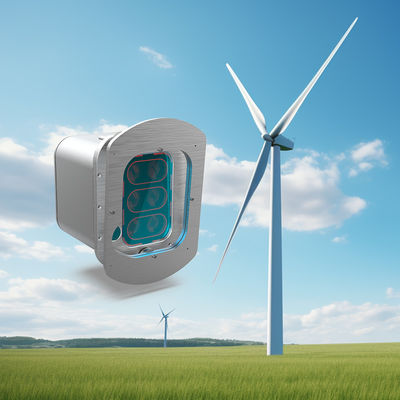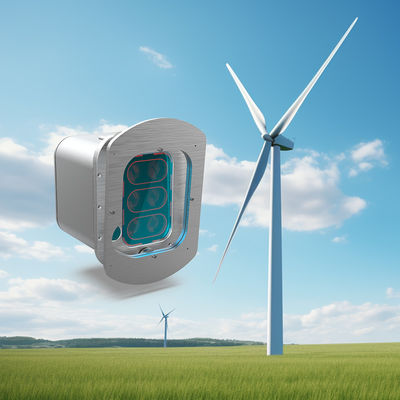Product Description:
Molas CL tower clearance lidar is a type of lidar designed to continuously monitor the clearance distance of blade tips in real-time. This technology allows the main controller of the fan unit to quickly implement protective measures, such as deceleration or retraction, when the monitored blade clearance value approaches the specified minimum clearance value. By integrating tower clearance lidar on existing units, potential tower sweeping incidents can be prevented, thereby raising the power limit of at-risk units and enhancing power generation capacity. Moreover, when applied to future units, tower clearance lidar can contribute to reductions in blade costs and alleviate design pressure on the units.
Features:
-
Product Name: Wind Measurement Lidar
-
Wavelength: 905nm
-
Working Acceleration Range: -0.5g~0.5g
-
Ambient Light Resistance: 100Klux
-
Beam 3: 4.09±0.2°
-
Beam 2: 2.05°±0.2°
Technical Parameters:
|
Range of Working Temperature
|
-40℃~+60℃
|
|
Beam 3
|
4.09±0.2°
|
|
Detection Distance
|
300m @ 10% reflectivity
|
|
Working Acceleration Range
|
-0.5g~0.5g
|
|
Laser Safety Level
|
Class 1M
|
|
Beam 1
|
0°
|
|
Distance Resolution
|
≤0.1m
|
|
Measurement Accuracy
|
±0.2m
|
|
Repeated Measurement Accuracy
|
±0.2m
|
|
Ranging Method
|
ToF
|
Applications:
Single point precise feedback
Single point precise feedback refers to providing detailed and accurate information based on a specific data point. This type of feedback is focused on a specific aspect or action, allowing individuals to make targeted improvements or decisions.
Threshold detection
Threshold detection involves identifying and signaling when a certain level or limit has been reached or surpassed. It is often used in monitoring systems to alert individuals or systems when conditions have crossed a critical threshold, requiring attention or action.
Trend detection
Trend detection involves recognizing patterns or tendencies in data over time. By analyzing historical data and identifying trends, individuals can gain insights into potential future developments and make informed decisions based on predicted outcomes.

 Your message must be between 20-3,000 characters!
Your message must be between 20-3,000 characters! Please check your E-mail!
Please check your E-mail!  Your message must be between 20-3,000 characters!
Your message must be between 20-3,000 characters! Please check your E-mail!
Please check your E-mail! 



